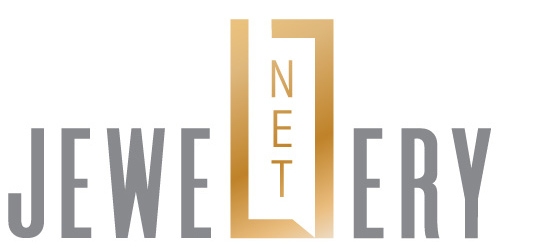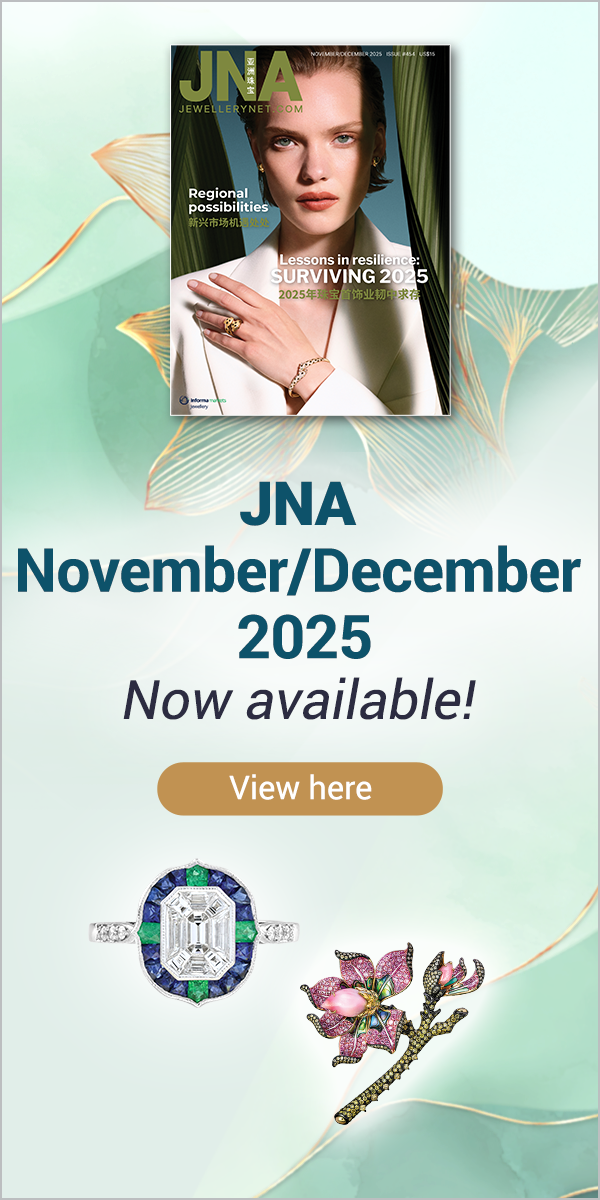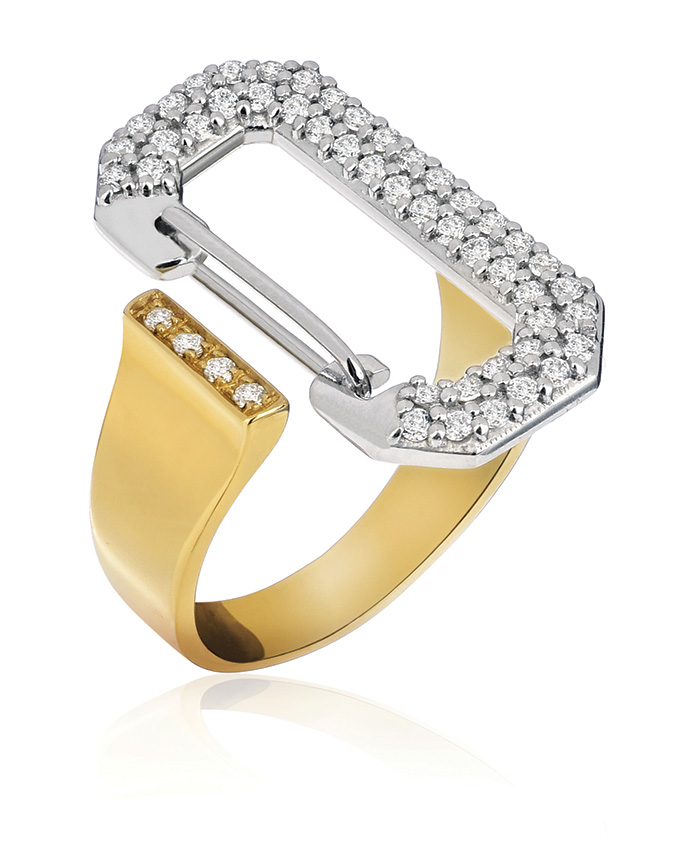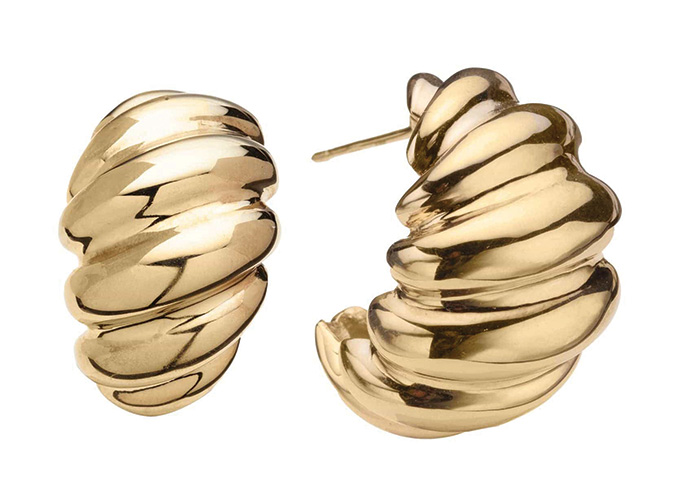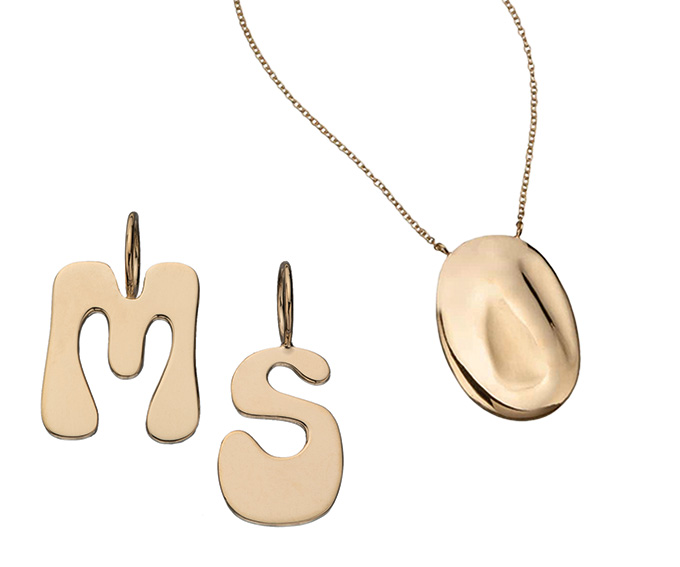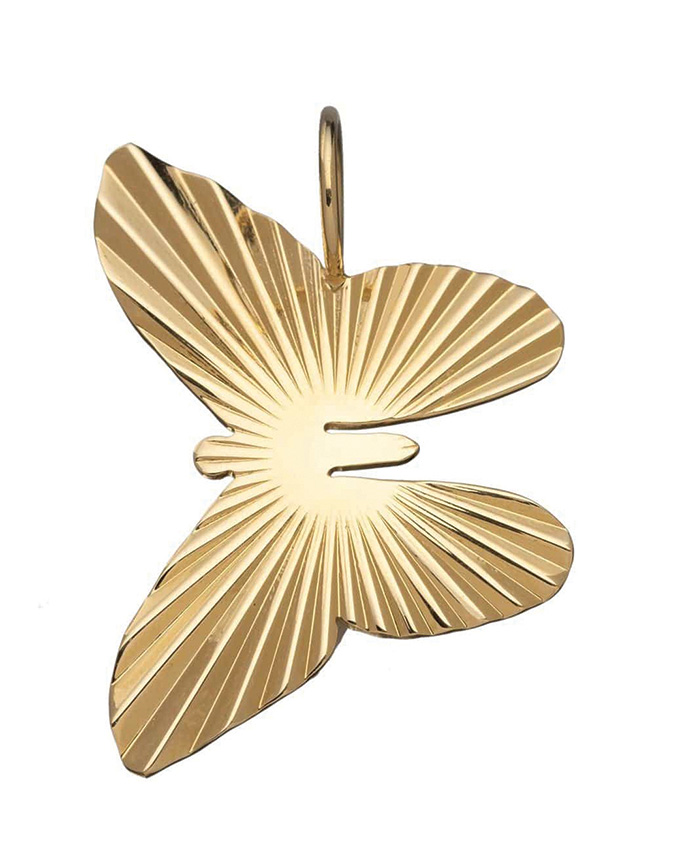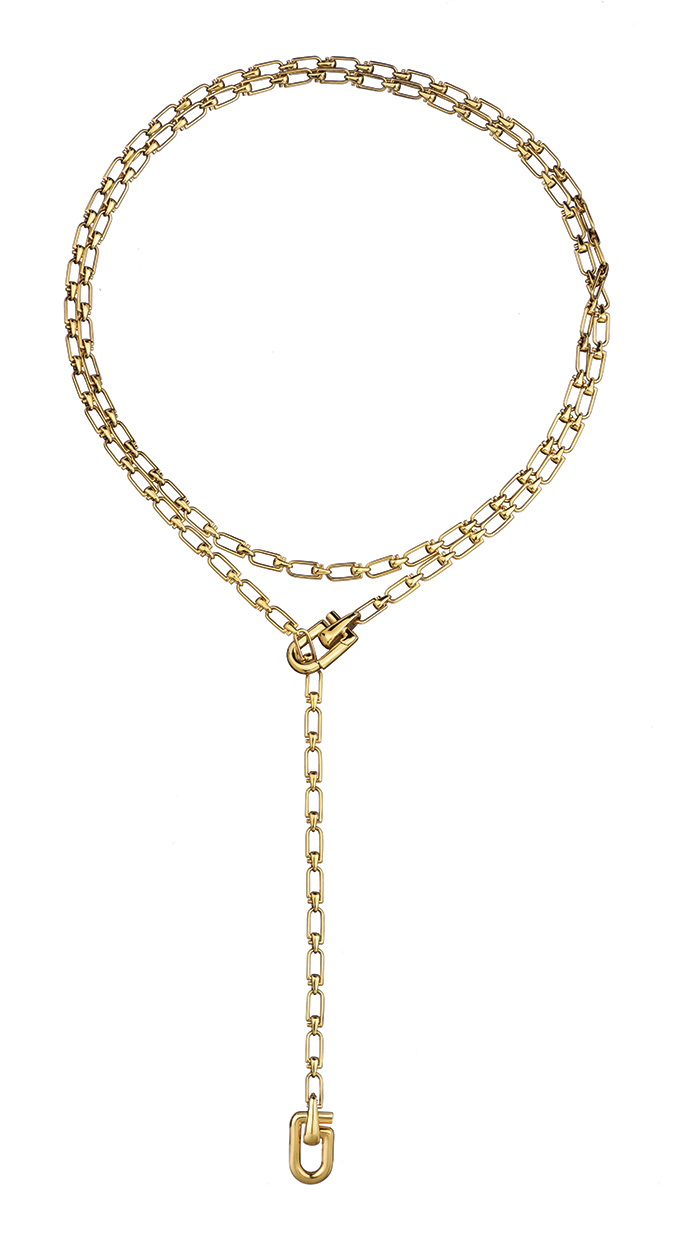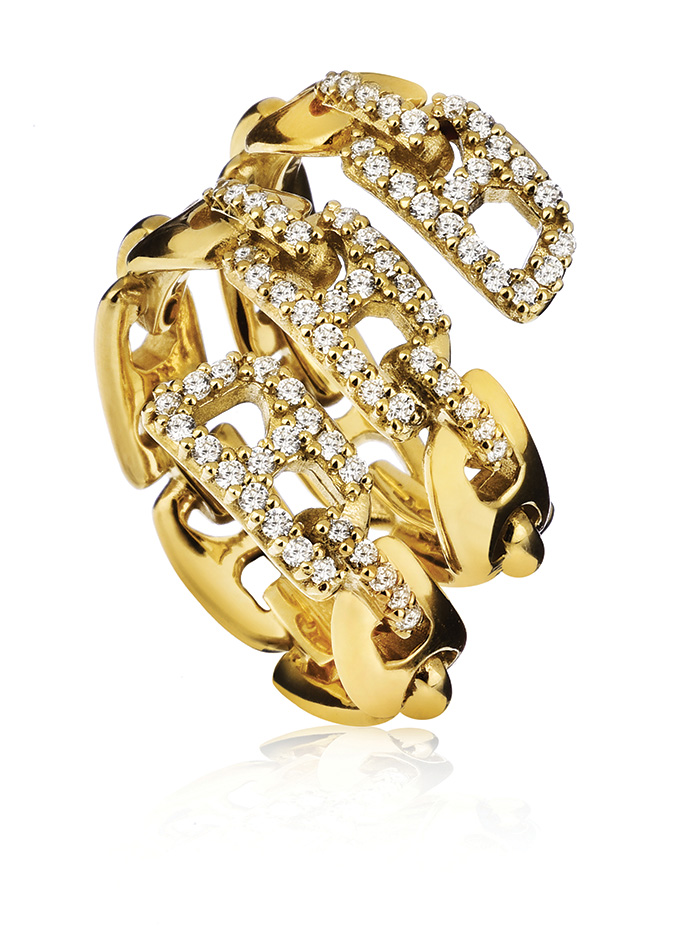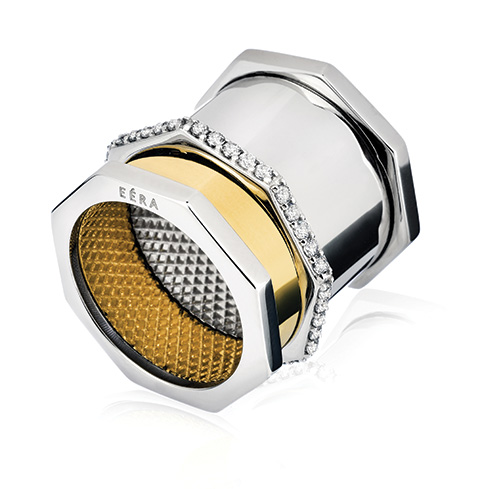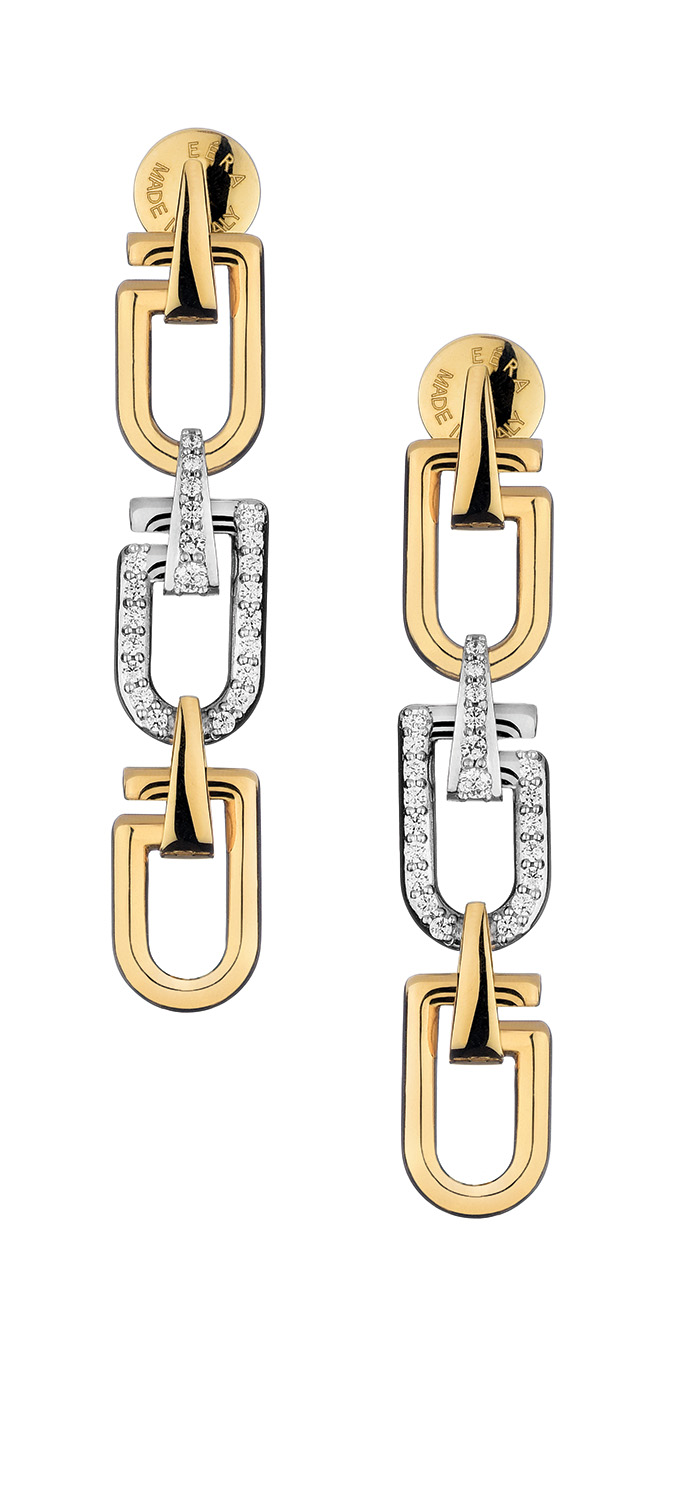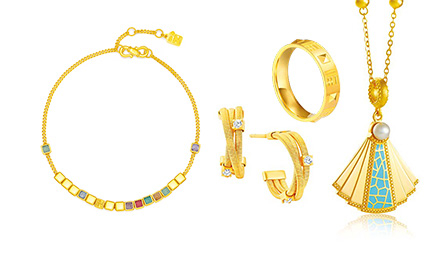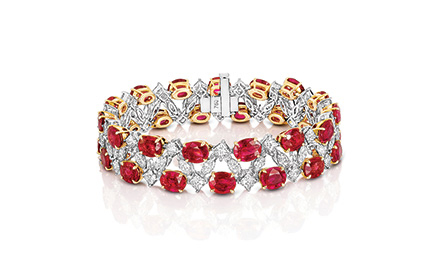This precocious generation’s predilection for the bold and the unconventional is transforming the way jewellery is marketed, sold and appreciated.
This article first appeared in the JNA July/August 2025 issue.
People born between 1997 and 2012, colloquially known as Gen Z, are redefining luxury on their own terms. While previous generations often view jewellery as a status symbol with emphasis on price tags, heritage and exclusivity, Gen Zs layer those traditional qualities with deeper values like authenticity, sustainability, digital relevance and personal meaning.
“Jewellery used to be about occasion; now it is about identity,” said Chiara Capitani, co-founder of Italian fine jewellery brand EÉRA. “Gen Z wants jewellery pieces that reflect who they are in the moment, without needing a reason to wear them.”
Breaking the rules
Gen Z’s bold self-expression and willingness to challenge conventions are reshaping jewellery aesthetics through a lens of cultural commentary and emotional depth. Alice Crossley, senior foresight analyst of global consultancy The Future Laboratory, explained that old rules do not apply to Gen Z – women collect watches while men seek out fine jewellery. Even brands are recognising this shift as seen in Louis Vuitton’s January 2024 launch of a dedicated men’s jewellery line.
Jaeyeon Park, youth strategist at global trend forecaster WGSN, said Gen Z’s instinct to break norms drives three defining themes: Rebellious resistance, nostalgia and community.
“In the context of today’s global polycrisis, Gen Z’s collective frustration is fuelling a rebellious design language,” noted Park, adding that grunge and punk-inspired
subcultures and aesthetics such as industrial metal hardware, oversized chains and studded bands are making a comeback. Tough and subversive, these accessories offer both visual and emotional outlets for a generation channelling protest through personal style, she added.
Capitani of EÉRA agreed, saying her company wanted to create something “unexpected, playful, and a little rebellious” as classic jewellery had become too conservative. EÉRA’s designs reflect this desire to challenge traditions with “modular pieces and industrial accents” that resonate with Gen Z’s expressive spirit.
EÉRA co-founder Romy Blanga commented, “There is a freedom in our aesthetic that Gen Z really connects with. Our jewellery is not about one look or one mood. You can clip it, mix it, break the rules. That echoes with a generation that does not want to be defined by a single identity.”
The brand’s signature snap hook – a utilitarian object reimagined in a neon finish or set with diamonds – perfectly encapsulates this. “Gen Z loves when opposites collide,” she continued. “Industrial materials, bold shapes, unexpected colours are where individuality lives.”
Jewellery industry insiders are noting a profound shift in how luxury is defined by today's consumers, with traditional concepts of permanence giving way to more dynamic expressions of value.
Blanga said it is now about transformation, noting that EÉRA’s pieces are adaptable and fluid, akin to Gen Z. The jewellery tells a story of freedom, where luxury moves and evolves with the wearer.
“For Gen Z, luxury is not about price or pedigree. It is about perspective. A luxury piece should be original, intentional and should feel personal,” she added. Unlike previous generations who gravitated toward labels, logos and legacy names, Gen Z prioritises meaning, creativity and brand connection.
Capitani added, “They want to connect with a brand, not be defined by it.”
Social media
Growing up with constant Internet access and exposure to social media, Gen Z's digital literacy and online habits impact their brand engagement and buying decisions. Social media channels like TikTok and Instagram have evolved into virtual microcosms where aesthetics, ideas, and taste are developed and discovered.
Social media and celebrity influence play a decisive role in shaping Gen Z’s jewellery choices. Jennifer Zeuner, founder and designer of her eponymous brand, remarked, “Gen Z is far more influenced by social media personalities and celebrities than Millennials. Whenever Selena Gomez or Hailey Bieber wears our brand, we know with certainty that Gen Z will purchase those pieces. Gen Zs trust the style choices of their favourite celebrities.”
EÉRA’s founders understand that social media marketing for Gen Z demands more than glossy campaigns. For this generation, authenticity is the new aspiration. “Everything starts digitally now. It is where discovery happens, but it is also where trust is built,” said Capitani. “We do not just show jewellery. We tell stories, share the process and reveal moments that feel human.”
Blanga added that social media is more than a promotional tool; it is a dialogue. She explained that Gen Z responds to honesty, playfulness and creativity. “The way we style, shoot and speak online is a huge part of how they connect with EÉRA. It is not about selling a product, but about building a relationship,” she continued.
Personalisation
The Future Laboratory’s Future Forecast 2025: Fashion report revealed that jewellery is becoming a powerful tool for self-expression, particularly among Gen Z. This generation is embracing cultural heritage with pride, remixing traditional pieces with everyday jewellery to create personal styles.
Gen Z’s collector mindset is driving demand for items that offer both meaning and craftsmanship. With traditional notions of owning homes or cars becoming less attainable, young consumers are investing in timeless, heritage-infused jewellery as markers of identity and value. “We are seeing an emerging ‘collectors’ mindset for jewellery among young consumers, opting for products with craftsmanship and heritage at the core,” said Crossley of The Future Laboratory.
Brands like Heaven Mayhem are tapping into this shift, offering nostalgic, remixable pieces such as brooches and watches that merge fine design with subversive, youth-driven aesthetics. Once seen as old-fashioned, brooches are now statement pieces used to tie together layered outfits. Crossley noted, “High-street designers have also been incorporating brooch-like features into their garment designs, adding a modern twist by creating tops and dresses with buckle-style elements or brooch-inspired accents around the straps or ruching the front.”
"Young consumers favour maximalist and statement designs,” Park stated, noting that jewellery and accessories have moved from supporting roles to defining elements that establish an outfit's entire aesthetic. She also cited the rise of a “jewellified DIY aesthetic” marked by customisation, layered chains and even tooth gems.
While Gen Z's gaming culture will continue to drive demand for digital collectibles and virtual fashion, experts are observing a post-pandemic shift toward tangible experiences and renewed interest in physical craftsmanship. Park said young people are increasingly returning to real-world spaces, embracing analogue aesthetics and in-person interactions. This shift, she added, is likely to foster greater appreciation for traditional craftsmanship.
As Gen Z matures, Park expects growing demand for sophisticated, occasion-driven pieces like pearls for weddings and refined metal jewellery for holidays.
Gen Z favours on-trend, versatile jewellery made from alternative materials to suit their fast-paced, travel-focused lifestyles. “Gen Z leans toward accessible, everyday styles, while Millennials still prefer fine jewellery, especially 14-karat gold charms and chokers,” noted designer Zeuner.
Despite their digital roots and interest in fintech and cryptocurrency, Gen Z is also drawn to traditional wealth symbols. Crossley explained that they are turning to gold and silver to diversify. She added, “This blend of modern values and classic investment presents a major opportunity for the jewellery industry, especially when tied to heritage, sustainability and ownership.”
Motifs and advocacies
Gen Z’s love of nostalgia and individuality is fuelling demand for eclectic, vintage-inspired styles. Park said a revival of Bohemia is seen in chunky bangles, ornate pendants and upcycled elements with a modern twist.
Retro designs are also trending. Zeuner noted the lasting popularity of 1980s-style “croissant” hoops, boosted by celebrity endorsers like Bieber.
Crossley, for her part, alluded to Gen Z’s penchant for eco-friendly and socially responsible practices. A recent analysis by The Future Laboratory titled Regenerative Luxury Jewels revealed a transition toward atypical and repurposed materials, from glass to wood, soda cans, Tetra Pak, 3D printing, and even electronic waste.
Blanga agreed that values now matter just as much as visuals. She added, “Gen Z is incredibly tuned in. They question how, where and why a product is made. There is desire for transparency and intention behind the beauty.”
In response to growing demand, major jewellery players are pivoting toward more sustainable practices. Pandora, for instance, made headlines by announcing it would stop using mined silver and gold altogether, committing instead to recycled metals.
